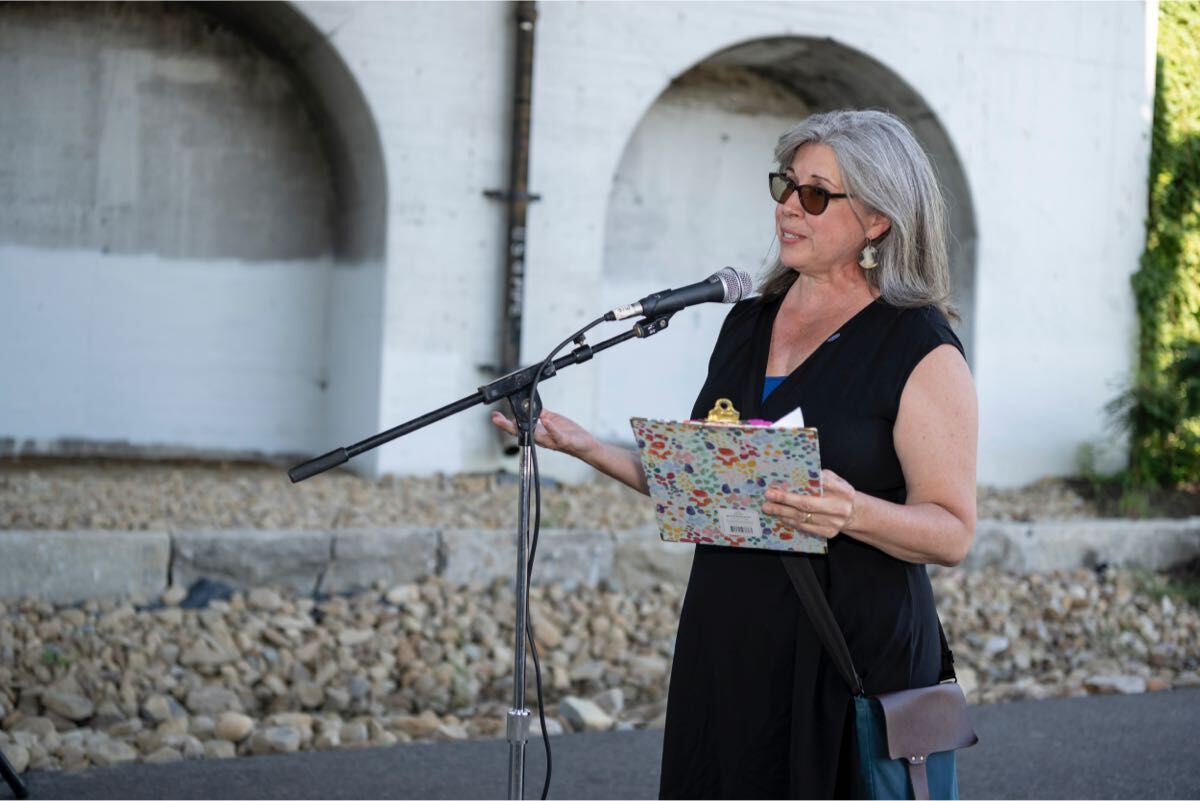About Us

The industrial valley of the Cuyahoga River has often been a dividing line between east and west, splitting the City of Cleveland and Cuyahoga County. That was, until a group of intrepid community explorers looked to the past to create a better future.
This group of hikers and historians saw tremendous potential in establishing a north-south regional greenspace that follows the historic path of the Ohio & Erie Canal.
Their concept: that the prosperity that once propelled Ohio to one of the nation’s most industrious locations may be realized again if the region embraced the unparalleled beauty of the industrial valley.
Canalway Partners was the catalyst created in 1985 to put form to that idea and find partnerships and funding to make it a reality.
This led to the creation of the Ohio and Erie Canalway National Heritage Area and a comprehensive four-county focus on reclaiming the canal corridor for recreation and connecting canal communities.
Today, Canalway celebrates our industrial valley and our innovative history along the 101-mile Towpath Trail and with events such as RiverSweep, an annual community cleanup, and River Rally that introduce and connect people to outdoor places such as the Cuyahoga River.
1985
A brainstorming session leads to the formation of Canalway, incorporated as North Cuyahoga Valley Corridor
1991
Canalway hires the first Executive Director, Tim Donovan.
1992
Cuyahoga County Planning Commission completes Ohio Canal Corridor vision plan for Cuyahoga River Valley — “The North Cuyahoga Valley Corridor Study”
1993
20 miles of the Ohio & Erie Canal Towpath Trail in Cuyahoga Valley National Park completed
1996
The Ohio & Erie Canalway National Heritage Area designated by Congress
1996
Ohio & Erie Canalway awarded the state’s first scenic byway
1998
The Cuyahoga River designated an American Heritage River
1999
Cleveland Metroparks open the Ohio & Erie Canal Reservation, adding 6.5 miles of Towpath Trail in Cuyahoga County and connecting to the completed section in Cuyahoga Valley National Park
2000
Ohio & Erie Canalway Byway becomes a national America’s Byway

2002
Cuyahoga County Planning Commission authors “Towpath Trail Extension: Alignment & Design Study”
2007
First 1.75 miles of Towpath Trail Extension Project completed at Steelyard Commons, privately funded by First Interstate and providing a TIF fund to support future development
2009
Four party agreement established with Canalway Partners, Cleveland Metroparks, City of Cleveland and Cuyahoga County to build the Towpath Trail Extension
2010
Trust for Public Land & Canalway purchase 11 acres along Scranton Flats to build Towpath Trail
2012
Groundbreaking for Scranton Flats Towpath Trail project
2013
Downtown Cleveland Alliance, Canalway Partners, Cleveland Metroparks, the City of Cleveland and Cuyahoga County author “Canal Basin Park: A Strategic Roadmap for Implementation”
2014
Ribbon cutting at the Scranton Flats section of the Towpath Trail, featuring 9 acres of restored meadow, a fish habitat, and a natural river bulkhead.

2015
City of Cleveland Planning Commission adopts the Canal Basin Framework plan, triggering the initial development of the park
2019
Founding Executive Director Tim Donovan retires and Mera Cardenas assumes the role

2022
Towpath Trail in Cuyahoga County, a $56M project, completed with the opening of the Canal Basin Trailhead

The non-profit Canalway has been known by several names in our 40-year history. Officially incorporated as North Cuyahoga Valley Corridor, we have also used the name "Ohio Canal Corridor" and "Canalway Partners." In a rebranding process in 2022, we began to operate as "Canalway."
The Ohio & Erie Canal was a major driver of Ohio’s economy in the early 19th century and early 20th century, and served as a commercial waterway for nearly one hundred years.
Starting at the Cuyahoga River in the newly formed City of Cleveland, the Ohio & Erie Canal was dug by hand between 1825 and 1832 and followed trail routes once used by American Indians. It was the first canal west of the Appalachian Mountains, connecting Lake Erie to the Ohio River. Upon completion, people and products flowed across America – from New York City to New Orleans, spurring the growth of Ohio cities and communities.
The Canal served as a major mode of travel and transportation through the Civil War until 1913. With the growth of the railroad industry, the use of the canal decreased until the flood of 1913 damaged it to the point it was retired as a commercial artery.
The Canal’s impact on industrial and commercial growth in Cleveland are still felt today. Learn more history on the Ohio & Erie Canalway Blog